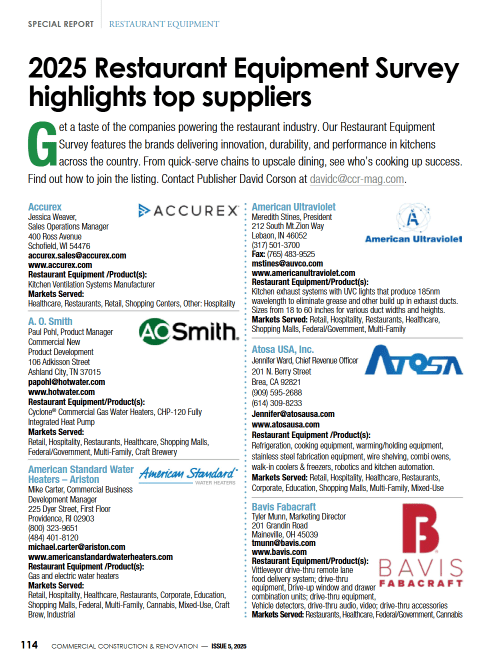In industrial settings, the safety of workers is of paramount importance. Accidents involving machinery or equipment can have severe consequences. One crucial safety practice is the use of lockout tagout locks, a method designed to prevent accidental machine starts or releases of hazardous energy during maintenance or servicing. In this comprehensive guide, we explore the significance of lockout tagout locks, their types, and the essential role they play in safeguarding employees in the workplace.
Understanding Lockout Tagout (LOTO)
Lockout tagout (LOTO) is a safety procedure that ensures equipment is properly shut off and not able to be started up again during maintenance or servicing work. The process involves the use of locks and tags to isolate energy sources, preventing the accidental activation of machinery that could pose a risk to workers. Lockout tagout locks are a critical component of this safety practice.
The Significance of Lockout Tagout Locks
Lockout tagout locks play a pivotal role in ensuring workplace safety, particularly in industrial settings where machinery and equipment are prevalent. The significance of lockout tagout locks lies in their ability to prevent accidental energization of equipment during maintenance or servicing, thereby safeguarding the well-being of workers. Let’s delve into the key aspects that highlight the importance of lockout tagout locks in enhancing workplace safety:
- Accident Prevention: The primary purpose of lockout tagout locks is to prevent accidents caused by the unintentional activation of machinery. By physically locking out energy sources, these locks ensure that equipment remains in a de-energized state, minimizing the risk of unexpected starts that could lead to severe injuries or fatalities.
- Hazardous Energy Control: Lockout procedures are particularly critical in controlling hazardous energy sources. Whether it’s electrical, mechanical, hydraulic, pneumatic, chemical, or thermal energy, lockout tagout locks provide a tangible barrier against the release of energy that could pose a threat to workers.
- Compliance with Safety Regulations: Occupational safety and health regulations often mandate the implementation of lockout tagout procedures in industrial settings. Using compliant lockout tagout locks ensures that workplaces adhere to these regulations, reducing the likelihood of accidents and promoting a culture of safety and compliance.
- Visual Identification of Lockout Status: Lockout tagout locks serve as visual indicators of the lockout status of equipment. The use of different lock colors or tags helps in easily identifying the nature of the lockout (e.g., electrical, mechanical) and provides a clear signal to workers that maintenance or servicing activities are in progress.
- Worker Empowerment: Lockout procedures empower workers to take control of their safety. Authorized personnel can physically lock out equipment, and the corresponding tags communicate critical information about the lockout status. This empowers workers to actively participate in the safety process and reinforces a sense of responsibility for their well-being.
- Prevention of Unauthorized Access: Lockout tagout locks act as a deterrent against unauthorized access to machinery during maintenance. The physical presence of a lock signals that work is in progress, discouraging individuals from attempting to start or interfere with equipment that is undergoing servicing.
- Ensuring Methodical Maintenance: Lockout tagout procedures necessitate a systematic approach to equipment maintenance. The process involves a step-by-step sequence, including the identification of energy sources, proper shutdown, application of lockout tagout locks, and verification of de-energization. This methodical approach enhances the overall maintenance process.
- Liability Reduction: Implementing lockout tagout procedures and using effective locks can reduce the liability of employers. By adhering to safety regulations and providing the necessary tools for workers to carry out lockout effectively, employers demonstrate a commitment to creating a safe working environment.
- Promotion of Safety Culture: The consistent use of lockout tagout locks contributes to the establishment of a safety-conscious culture within the workplace. When employees witness and participate in the proper application of lockout tagout procedures, it reinforces the importance of safety as a core value of the organization.
- Emergency Response Preparedness: Lockout tagout locks facilitate emergency response preparedness by clearly indicating when equipment is undergoing maintenance. In the event of an emergency, responders can quickly identify the lockout status and take appropriate actions, ensuring a coordinated and safe response.
Types of Lockout Tagout Locks
Lockout tagout locks come in various types, each designed for specific applications and energy isolation needs. Understanding the different types helps ensure that the right lock is used for the corresponding machinery or equipment.
- Padlocks: Padlocks are a common type of lockout tagout lock, known for their versatility and ease of use. They are available in various colors to signify different energy sources or departments, aiding in visual identification.
- Safety Locks: Safety locks are designed with features that make them well-suited for lockout tagout applications. They often have non-conductive and non-sparking properties, making them suitable for use in environments with electrical hazards.
- Hasps: Lockout hasps are devices that allow multiple padlocks to be used, ensuring that more than one person is involved in the lockout tagout process. This adds an extra layer of safety, requiring collaboration before energy sources can be re-activated.
- Cable Locks: Cable locks are flexible and adaptable, making them ideal for securing equipment with irregular shapes or components. They provide a secure way to immobilize machinery and prevent the release of hazardous energy.
The Lockout Tagout Process
The effective implementation of lockout tagout procedures involves a systematic process to ensure the safety of workers and compliance with regulations. The key steps in the lockout tagout process include:
- Identification of Energy Sources: Conduct a thorough assessment to identify all energy sources associated with the equipment. This includes electrical, mechanical, hydraulic, pneumatic, and other sources that could pose a risk.
- Notification and Communication: Notify all affected employees about the upcoming lockout tagout procedure. Clear communication is essential to ensure that everyone is aware of the equipment being serviced and the corresponding lockout measures.
- Equipment Shutdown: Before initiating the lockout tagout process, shut down the equipment in a controlled manner. Follow proper shutdown procedures to avoid any unforeseen issues during maintenance or servicing.
- Application of Lockout Tagout Locks: Apply the appropriate lockout tagout locks to each energy isolation point. Ensure that each lock is properly secured and cannot be removed without the authorized personnel’s involvement.
- Release of Stored Energy: Safely release any stored energy from the equipment to ensure that it is in a completely de-energized state. This may involve bleeding pressure, discharging capacitors, or any other necessary steps based on the type of equipment.
- Verification of De-Energization: Before commencing work, verify that the equipment is in a de-energized state. This may involve double-checking energy indicators, testing circuits, or using appropriate tools to ensure that no energy is present.
- Application of Tagout Devices: Once locks are in place, attach tagout devices that provide information about the lockout status. Tags often include details such as the name of the authorized employee, the reason for the lockout, and the expected duration of the lockout.
- Work Completion and Equipment Restoration: After the maintenance or servicing work is completed, the authorized personnel follow a specific process to remove the lockout tagout locks and restore the equipment to normal operation safely.
Training and Education
Proper training and education are vital components of a successful lockout tagout program. All employees involved in the process, including authorized personnel, affected employees, and those responsible for supervision, must be well-informed about the procedures and safety measures.
- Authorized Personnel Training: Individuals authorized to perform lockout tagout procedures should undergo comprehensive training. This training covers the identification of energy sources, proper application of locks, and adherence to safety protocols.
- Employee Awareness Programs: All employees working in an environment where lockout tagout procedures are implemented should be aware of the importance of these safety measures. Awareness programs help create a safety-conscious culture within the organization.
- Supervisory Training: Supervisors play a crucial role in overseeing lockout tagout processes. Training programs for supervisors focus on ensuring proper communication, adherence to procedures, and addressing any challenges that may arise during the lockout tagout process.
Conclusion: Elevating Workplace Safety with Lockout Tagout Locks
The implementation of lockout tagout procedures, supported by the use of reliable lockout tagout locks, is a cornerstone of workplace safety in industrial settings. By systematically isolating energy sources and preventing accidental activations, these safety measures contribute to the well-being of employees and compliance with safety regulations.
Investing in the right locks is a crucial step in ensuring the success of lockout tagout procedures within your organization. Elevate workplace safety, protect your employees, and foster a culture of responsibility by prioritizing the implementation of effective lockout tagout practices.
































